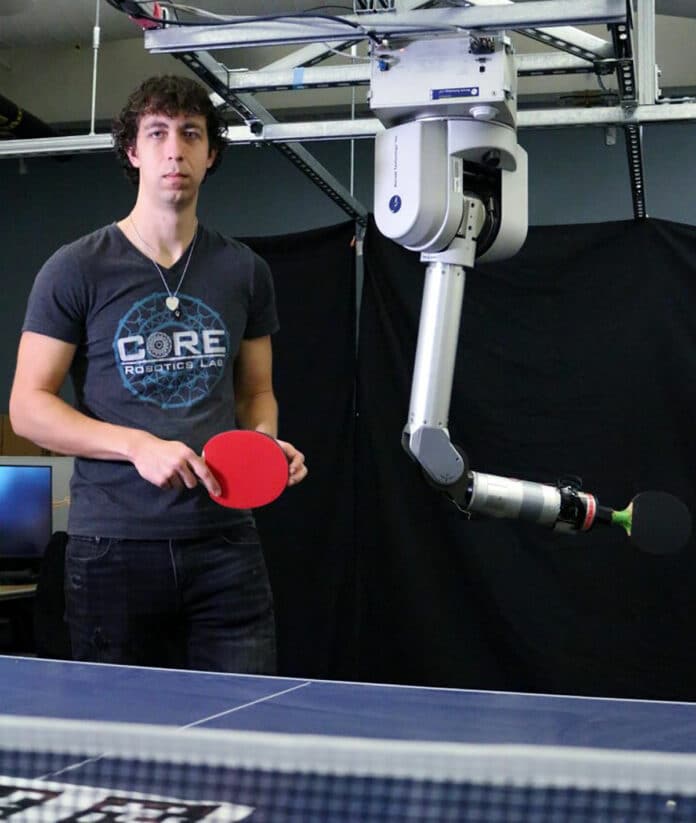Researchers demonstrate the potential areas a robot can work closely with human partners to complete tasks.
The deployment of collaborative robots holds the promise of increasing productivity and enhancing safety. These robots are expected to collaborate in proximity with human workers as opposed to the caged robots typically encountered within today’s manufacturing industry.
The team of researchers at Georgia Tech is using the sport of table tennis to showcase that humans may not always trust a robot’s explanation of its intended action. They have developed an agile robot called ‘cobot,’ that uses table tennis to demonstrate the potential areas a robot can work closely with human partners to complete tasks.
The robot is a Barrett WAM arm equipped with a camera and paddle. It was trained through a machine learning process called imitation learning. The team developed a system to give the robot positive reinforcement for successful volleys and negative reinforcement for unsuccessful ones.
“We have also trained our robot to be a safe table tennis partner,” said Matthew Gombolay, an assistant professor in the School of Interactive Computing and director of the Cognitive Optimization and Relational (CORE) Robotics Lab at Georgia Tech. “We leveraged prior work on table tennis and “learning from demonstration techniques” in which a human can teach a robot a skill such as how to hit a table tennis shot or simply having the human demonstrate the task to the robot.”
The project demonstrates the potential for robots to work closely with humans in physical and social capacities, a significant step forward for collaborative robotics. The development of intelligent systems that can work collaboratively with humans has numerous applications, from manufacturing and healthcare to education.
During the demonstrations, in most cases, researchers found a lack of trust in human participants from explanations given by the robot and were less likely to collaborate with it as a result. The potential reason is a lack of trust that the robot may not have the same goals or motivations as the human partner. Participants in the study were more likely to trust a robot’s explanation when they felt that the robot shared their goals and motivations.
Gombolay highlights the importance of developing robots that can communicate effectively with humans in a way that builds trust and confidence. This is important in settings where the consequences of a mistake or miscommunication can be severe, such as in healthcare or emergency situations.
“While the choice to work with a robot is ultimately an objective behavior and may vary based upon the context or how risky the interaction is, it is ultimately this trust factor that is a key driving force behind your decision-making and behavior,” said Gombolay. “In practice, we often find that people design and deploy impressive robotic solutions, but that robot was not designed to engender the appropriate level of trust from the human end-users.”
The researchers suggest that a possible solution may be to design robots that are more transparent in their decision-making processes. By providing human partners with a clear understanding of how the robot arrived at a particular decision or action, it may be possible to build trust and confidence in the robot’s abilities.
“The greater goal of the project is to understand how to design robots for fast-paced, proximate interactions in manufacturing, logistics warehouses, restaurant kitchens, and even in homes. We need to know how to design physically safe systems, of course, but we also need to know what users find intuitive and trustworthy – what makes users feel safe,” said Gombolay. “Otherwise, these robots will never make it out of the lab to coexist with people. I believe our work answers key questions in helping design robots for interaction with people, particularly involving how robots convey their intentions to their human counterparts. But, of course, the research opens even more exciting opportunities than existed before.”
